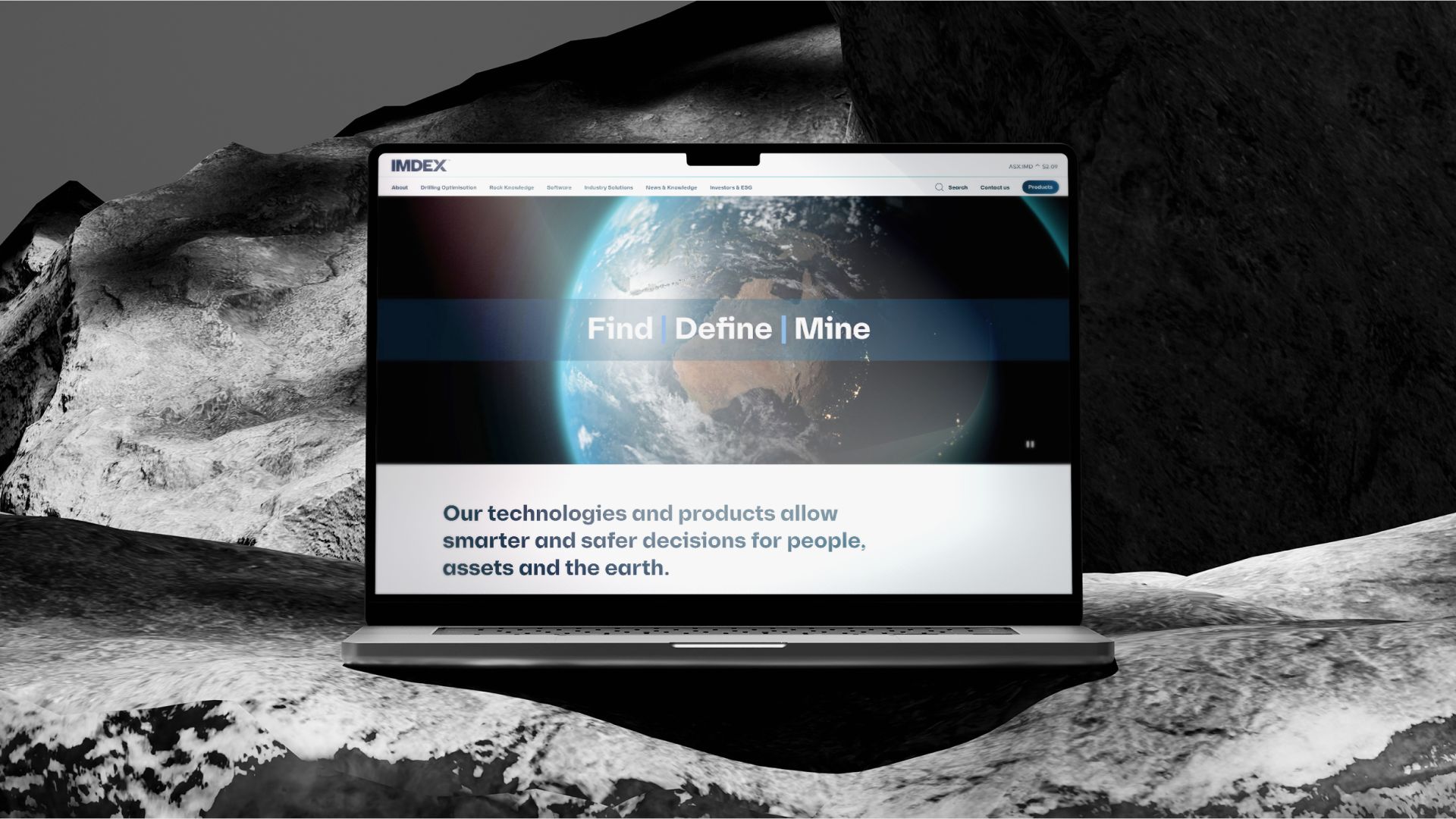
No longer just a phrase, digital transformation is becoming an increasingly essential aspect of Australian businesses – with significant operational impact.
The integration of digital technology into all business areas and fundamentally changing operations is how you would define digital transformation.
Although the dynamic landscape of the business world is evolving, technology is playing a core role in the shaping of business strategies. Digital transformation is now necessary to meet the personalisation demands of modern customers.
More customers expect highly personalised customer service. According to Employsure “small businesses make up 98% of Australian businesses”. Additionally, small businesses that have embraced digital transformation have seen eight times higher growth (Employsure). This highlights the importance of digital transformation for small businesses, as it can be a significant driver of growth and productivity.

"By embracing digital transformation, organisations can engage with modern buyers and deliver seamless customer experiences, regardless of the channel used."
What is Digital Transformation?
Exploring the concept of digital transformation and its meaning in the context of business evolution is about fundamentally changing the way a business interacts with its customers and operations. Companies that undergo digital transformations in business create highly engaged customers and enjoy tangible benefits, such as increased revenue and growth opportunities.
Technology plays an integral role in reshaping processes, customer experiences, and overall business models. Businesses thrive through new and unique business models to create revenue streams, develop efficient operations, and build strong customer relationships. By using emerging tools and technology, businesses can refine elements of their business model to increase value generated, reduce costs incurred, and align their products and services to meet customer needs.
The traditional model is being transformed by technology, including the Internet of Things (IoT), robotic technology, and 3D printing. These transformations are sometimes referred to as Industry 4.0, which is the fourth stage of the Industrial Revolution.
Driving Forces of Digital Transformation
Digital transformation is a powerful force that is driving companies to change their business models and adapt to new market realities. Business executives believe that digital transformation can help them improve their operations and meet customer expectations. As a result, more executives are planning to invest in technology to gain a competitive edge.
Today's customers are becoming increasingly sophisticated and expect a highly personalised experience consistent across many channels. Companies such as Amazon and Netflix have raised consumer expectations to new heights, setting a high bar - other companies now need to go above and beyond usual efforts to meet their customer's demands.

Benefits for Australian Businesses
There are many tangible benefits Australian businesses can gain from adopting digital transformations in business. Implementing this strategy can help improve agility, profitability, and customer perception, which all positively impact the bottom line. It can also result in administrative cost reductions by streamlining routine business processes, among other things.
The meaning of digital transformation is to create the most value and completely rethink operations. Experts agree that digital transformation should be an ongoing process of constant improvements, rather than a one-time overhaul.
Enhanced operational efficiency, improved customer experiences and the ability to stay competitive in the digital era are some of the key outcomes of digital transformation. Boosting the digital capability of small businesses, removing outdated regulatory barriers and driving technology uptake across the economy are also some other key benefits.
To be more efficient, businesses can simplify their processes and automate routine tasks - reducing mistakes, speeding up time-to-market and saving money by removing unnecessary manual systems.
When businesses have access to real-time data and analytics, they can make informed decisions that help them identify areas where they can save money, optimise their processes, and generate more revenue. This ultimately leads to better decision-making and improved profitability.
Adaptability and Innovation
In today's digital era, it is crucial for businesses to remain adaptable and innovative to stay competitive in the market. This requires a continuous effort to evolve and leverage technology to meet the ever-changing demands of customers. The digital transformation journey involves integrating digital technologies into all aspects of a business, which can lead to increased efficiency, streamlined processes, and improved customer experience (CX).
However, this journey is not a one-time event but a continuous process that requires businesses to keep up with the latest trends and technologies. By being adaptable and innovative, businesses can embrace opportunities presented to them - and stay ahead of the curve.
Despite the benefits of digital transformation projects, many Australian small businesses delay making decisions about new technology - creating a significant adoption gap. This hesitation to consider digitalisation could potentially cost the Australian economy and their business. Therefore, it is important for small businesses to realise the potential of digital transformation and take proactive steps to implement new technology into their operations. By doing so, they can stay competitive and enhance their chances of success in the ever-evolving business landscape.
If your business is looking for advice on digital transformation, get in touch with our digital transformation consultants to find out how your business stands to benefit.

Challenges and Solutions
Navigating digital transformations in business poses several challenges. The integration of new digital technologies with existing legacy systems and infrastructure can lead to issues and disrupt operations.
A further obstacle is managing change and overcoming cultural resistance, as staff and company cultures might be used to conventional work methods. This can impede adoption and acceptance of digital strategies. It's very important to protect sensitive information, as issues related to data privacy and security are genuine.
It is essential to highlight the importance of safeguarding sensitive data and complying with regulations, particularly given growing concerns about cybersecurity threats and privacy breaches. Investing in recruiting and retaining talent with the necessary digital skills and expertise to drive successful digital transformations is critical. Robust cybersecurity measures, encryption protocols, and compliance frameworks should be advocated for. Scalability and flexibility also pose a challenge as digital initiatives need to adapt to evolving market dynamics and maintain operational agility.
A clear digital strategy is necessary, aligned with business objectives and a long-term vision for transformation, ensuring buy-in from leadership and stakeholders. Adopting agile methodologies to development allows for flexibility, experimentation, and rapid iteration in digital initiatives. Employee training and development programs are also crucial in upskilling existing talent - they help to bridge a skills gap and foster an innovative culture.
Future Trends in Digital Transformation
Looking forward to the future trends and advancements in digital transformation for Australian businesses, we can see the role of emerging technologies, data-driven insights, and the evolution of digital business models. With regards to digital business models, the subscription economy refers to the shift towards subscription-based business models where customers pay for ongoing access to products and/or services, driving recurring revenue streams and customer loyalty.
The platform economy focuses on the rise of platform-based business models that facilitate connections and transactions between users, enabling new forms of collaboration and value creation. It is crucial to establish strategic partnerships and ecosystems to provide the best solutions to customers.
The Takeaway
Australia's economy is expected to grow significantly over the next decade, reaching an estimated value of $315 billion. This growth is driven by the country's focus on digitisation and digital transformations in business and technology transformation. With the Australian government heavily investing in cybersecurity, technology education and redesigning regulatory policies, they are paving the way for encouraging organisations to embrace digital transformation.
Emerging technologies like automation, cloud computing, and Internet of Things (IoT) will play an essential role. IoT is particularly important in key sectors like agriculture, healthcare, and transportation. It enables organisations to collect and analyse data from connected devices, and use the insights to optimise operations, enhance products and services, and gain a competitive global edge.
Overall, digital transformation presents significant opportunities for Australian organisations to grow, increase profitability, and be more competitive globally.

Frequently Asked Questions
What is digital transformation in simple words?
In simple terms, digital transformation refers to the process of integrating digital technologies into all aspects of a business, fundamentally changing how it operates and delivers value to customers. It's like modernising a business by using technology to streamline processes, enhance efficiency, and adapt to evolving market demands.
What is the purpose of digital transformation?
The primary purpose of digital transformation is to enable organisations to stay relevant and competitive in an increasingly digital world. By embracing digital technologies, businesses can improve efficiency, enhance customer experience, drive innovation, and adapt to change, thereby future-proofing their operations.
What are the four types of digital transformation?
There are four main types of digital transformation:
1. Business Process Transformation: Digitising and optimising internal processes to improve efficiency, reduce costs, and enhance decision-making.
2. Customer Experience Transformation: Leveraging digital technologies to deliver exceptional customer experiences across all touchpoints.
3. Business Model Transformation: Reimagining the way a business creates, delivers, and captures value by leveraging digital platforms, ecosystems, and revenue models.
4. Cultural/Organisational Transformation: Fostering a digital-first mindset, promoting innovation, and reshaping organisational culture, structure, and processes to adapt to the demands of the digital age.
What are the 3 R's of digital transformation?
The 3 R's of digital transformation are:
1. Reimagine: Envisioning new ways of doing business and challenging existing paradigms.
2. Reinvent: Transforming existing processes, products, and services using digital technologies.
3. Redefine: Continuously evolving and adapting to changes in the digital landscape, embracing experimentation and a culture of continuous improvement.
What is an example of a digital transformation business model?
An example of a digital transformation business model is that of Netflix. Originally a DVD rental service, Netflix underwent a profound digital transformation by shifting its focus to streaming media over the internet. By adopting a subscription-based revenue model and leveraging data analytics to personalise content recommendations, Netflix disrupted the traditional entertainment industry and became a global leader in digital streaming.






_web.webp)
































_web.webp)
_web.webp)
_web.webp)

_web.webp)



_web.webp)




























